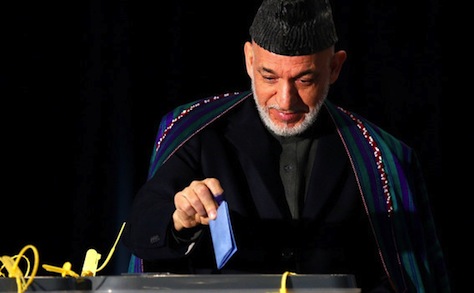
When Indonesians vote on April 9, it will be the last time that Indonesians elect a parliament prior to electing a president. In 2019, Indonesians will vote on a parliament and a president simultaneously.
That gap, for the past decade, has made the parliamentary election the first stage in the process of electing a president. Under Indonesia election law, a party must win 20% of the seats in Indonesia’s Dewan Perwakilan Rakyat (DPR, People’s Representative Council) or 25% of the national vote to nominate a presidential candidate — otherwise, it must ally with another party (or parties) until their cumulative support reaches the 20/25% hurdle.
That means that the parliamentary election has traditionally prompted the horse-trading necessary to build alliances that precede the presidential race. Even in 2009, when Indonesia’s president Susilo Bambang Yudhoyono won an easy reelection, his party, the Partai Demokrat (Democratic Party), won just 20.85% of the national vote and 148 seats in the 560-member DPR, barely squeaking past the hurdle with just over 26% of the chamber’s seats.
Indonesians will also elect the Dewan Perwakilan Daerah (DPD, the Regional Representative Council), a second legislative body formed in 2004 with relatively more limited powers than the DPR. Both bodies have fixed five-year terms.
Members of the DPR are elected by proportional representation from multi-member districts that have between 3 and 10 representatives. Nationally, a party must win at least 3.5% of the vote to enter the DPR.
Though Jakarta governor Joko Widodo (‘Jokowi’) is the wide frontrunner to become Indonesia’s next president in the July 9 election, however, the elections are still an important step in determining the nature of Indonesia’s next government.
* * * * *
RELATED: Who is Joko Widodo?
* * * * *
Generally speaking, though the lines blur somewhat, you can separate Indonesia’s major parties into three categories — Islamist parties (most of which are relatively mild by the standards of Islamists in the Middle East and North Africa), nationalist parties and moderate, secular parties guided by the somewhat vague principles of pancasila (five principles set forth by Sukarno, Indonesia’s first post-independence leader: Indonesian nationalism, humanism, democracy, social justice, and monotheism). Continue reading Four key points to watch as Indonesia elects a new parliament →

